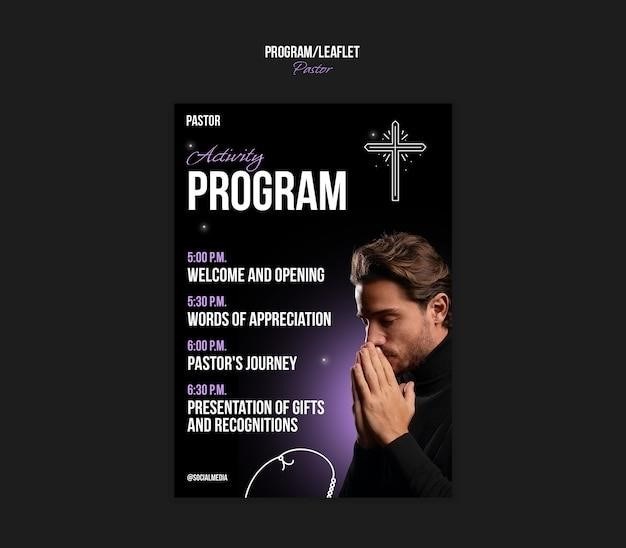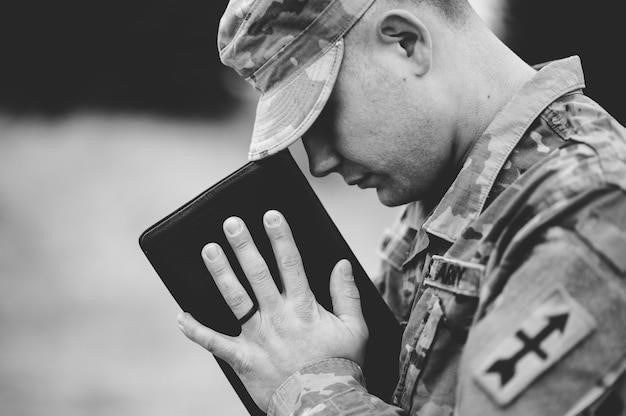Understanding the 3rd Step Prayer in AA
The 3rd Step Prayer in Alcoholics Anonymous represents a crucial turning point in recovery. It involves surrendering one’s will and life to a higher power, as understood by the individual. This act of surrender is vital for releasing self-reliance and embracing guidance from a source beyond oneself.
The 3rd Step Prayer⁚ Text and Variations
The most common version of the Third Step Prayer reads⁚ “God, I offer myself to Thee—to build with me and to do with me as Thou wilt. Relieve me of the bondage of self, that I may better do Thy will. Take away my difficulties, that victory over them may bear witness to those I would help of Thy Power, Thy Love, and Thy Way of life. May I do Thy will always!” However, variations exist. Some individuals personalize the prayer, substituting “Higher Power” for “God,” reflecting the program’s inclusivity. Others adjust the wording to better resonate with their personal understanding of a higher power or their specific struggles. The core message—surrender and reliance on a guiding force—remains consistent across variations.
Common Interpretations of the Prayer
The Third Step Prayer’s interpretation is deeply personal, varying based on individual beliefs and experiences. For some, it’s a literal surrender to a divine being, seeking divine intervention in overcoming addiction. Others view it as a metaphorical surrender—releasing control over their lives and trusting in a guiding principle, be it faith, reason, or a supportive community. Many interpret the “difficulties” as the challenges of addiction and recovery, while the “witness” refers to inspiring others through their journey. The prayer’s essence lies in humility and the willingness to relinquish self-will, embracing a power larger than oneself to navigate the complexities of recovery. Ultimately, its meaning is shaped by the individual’s relationship with their chosen higher power.
The Significance of Surrender in Step 3
Surrender, central to the 3rd Step Prayer, signifies a profound shift in perspective and approach to recovery. It’s not passive resignation but an active choice to relinquish the futile struggle against addiction. This involves acknowledging powerlessness over one’s addiction and the unmanageability of life without help. Surrendering implies humility, admitting a need for guidance and support beyond oneself. It allows for a reliance on a higher power – however one defines it – fostering trust and faith in a force greater than personal will. This act of surrender is a critical step towards achieving sobriety and long-term recovery, paving the way for spiritual growth and a more fulfilling life. The willingness to surrender is the foundation upon which recovery is built.

The Origins and Authorship of the Prayer
The precise origins of the 3rd Step Prayer remain debated. While often attributed to early AA founders, recent research suggests alternative authorship, possibly Harold Hill.
Tracing the Prayer’s History
Pinpointing the exact origin of the Third Step Prayer proves challenging. Many associate it with the early days of Alcoholics Anonymous, often mistakenly attributing it to Bill W. or Dr. Bob, the co-founders. However, research indicates a later emergence, potentially linked to a 1976 publication, “How To Be a Winner,” by Harold Hill. This book aimed to integrate Christian principles into daily life, offering an accessible approach that avoided rigid dogma. The prayer’s evolution likely involved gradual refinement within AA circles, reflecting the collective experience and evolving understanding of spiritual growth within the program. While its precise genesis remains uncertain, its enduring presence in AA literature underscores its profound impact on countless individuals seeking recovery.
Debates Surrounding the Author
The authorship of the Third Step Prayer remains a subject of ongoing discussion within Alcoholics Anonymous. While many initially attributed it to Bill W. or Dr. Bob, the co-founders of AA, recent research suggests a different possibility. Some evidence points towards Harold Hill, author of the 1976 book “How To Be a Winner,” as the actual author. This attribution, however, is not universally accepted, and the lack of definitive documentation fuels the debate; The anonymity central to AA’s principles further complicates efforts to definitively establish authorship. The enduring impact of the prayer on recovery transcends the question of its origins, highlighting its value regardless of its creator. The mystery surrounding its authorship adds another layer to its significance within the AA tradition.
Practical Application of the 3rd Step Prayer
Daily recitation and reflection on the prayer’s meaning fosters a deeper connection with one’s higher power and promotes sustained recovery. Seeking guidance from sponsors and support groups aids in practical application of Step 3 principles.
Integrating the Prayer into Daily Life
Many find incorporating the Third Step Prayer into their daily routine beneficial. This could involve reciting it upon waking, before meals, or during moments of stress or temptation. Some individuals journal their reflections on the prayer, exploring its meaning and relevance to their daily experiences. Others might incorporate it into meditation or prayer practices. The key is to find a method that feels authentic and sustainable. Regular engagement helps to internalize the principles of surrender and reliance on a higher power. This consistent practice can strengthen one’s connection with their spirituality and foster resilience in the face of challenges.
Finding Support and Guidance
Navigating the complexities of Step Three often requires external support. A sponsor, a trusted friend, or a member of the AA community can provide invaluable guidance and encouragement. Sharing experiences and challenges with others who understand the process can foster a sense of belonging and reduce feelings of isolation. Many find solace and strength in group meetings, where they can connect with others on a similar path. These connections create a supportive network that helps individuals to stay committed to their recovery journey. Seeking professional guidance, such as therapy or counseling, can also be beneficial in addressing underlying issues and developing coping mechanisms. Remember, recovery is a journey, not a destination, and support is crucial along the way.
Overcoming Obstacles in Step 3
The third step, while profoundly transformative, presents unique challenges. Resistance to surrendering control is common; fear of relinquishing self-reliance can be significant. Doubt, fear, and a lack of understanding of “higher power” are frequent obstacles. Some struggle with defining their higher power, while others grapple with the concept of surrender itself. Perfectionism can hinder progress; the expectation of immediate and flawless results is unrealistic. It’s crucial to remember that the process is ongoing and involves setbacks. Honest self-reflection, coupled with the support of a sponsor or group, helps navigate these difficulties. Patience, perseverance, and a willingness to accept imperfections are key to overcoming obstacles and embracing the transformative potential of Step Three.

The 3rd Step Prayer in the Context of AA’s 12 Steps
The 3rd Step Prayer lays the foundation for subsequent steps in the AA program. Surrender to a Higher Power enables spiritual growth and facilitates honest self-assessment, crucial for long-term recovery.
Step 3 and its Relationship to Other Steps
The Third Step, often involving the Third Step Prayer, acts as a bridge connecting the initial admissions of powerlessness and unmanageability (Steps 1 and 2) with the subsequent steps of amends and growth. Surrendering to a Higher Power, as expressed in the prayer, prepares the individual for the self-examination of Step 4. This surrender facilitates the willingness needed for Steps 5-9, where one confronts past mistakes and seeks to make amends. The honesty fostered by Step 3 is essential for the spiritual awakening described in Step 10, and the continued growth and service to others highlighted in Steps 11 and 12. Without the foundation of Step 3, the later steps would be significantly more challenging. The prayer itself is not mandated, but its reflective nature aligns perfectly with the spiritual principles guiding the entire recovery process.
The Role of Higher Power in Recovery
The concept of a Higher Power is central to the AA program and deeply intertwined with the Third Step and its associated prayer. This Higher Power is not necessarily a religious deity; it can be interpreted in various ways, including nature, a spiritual force, a group of people, or even a set of guiding principles. The crucial aspect is that it represents a power greater than oneself, a force capable of providing strength, guidance, and support where personal willpower has proven insufficient. The Third Step Prayer embodies this belief, asking for help in overcoming self-will and difficulties. This reliance on a Higher Power isn’t about blind faith but about acknowledging a need for help beyond individual capabilities, fostering humility and opening oneself to a path of recovery that goes beyond personal strength alone. It offers a framework for spiritual growth and a renewed sense of purpose.
Resources and Further Information
For more information, consult the official AA website and literature. Additional support groups and resources are readily available online and in your community.
AA Websites and Literature
The Alcoholics Anonymous World Services website (aa.org) offers a wealth of resources, including the Big Book, which contains the foundational text of the AA program. Within the Big Book, you’ll find various interpretations and discussions of the 3rd step, including the prayer itself. Many AA groups also provide supplementary materials, pamphlets, and worksheets that delve deeper into the meaning and application of Step 3. These resources often offer personal reflections from members who’ve successfully navigated this crucial stage of recovery. Exploring these official channels ensures you’re receiving accurate, consistent information about the 3rd Step Prayer and its role within the AA program. Remember that individual interpretations vary, but the core tenets of surrender and reliance on a higher power remain central.
Additional Support Groups and Resources
Beyond Alcoholics Anonymous, numerous organizations and resources offer support for individuals struggling with addiction and seeking spiritual guidance; These include faith-based recovery programs, which often incorporate prayer and spiritual practices into their therapeutic approaches. Mental health professionals specializing in addiction can provide counseling and support in navigating the emotional and psychological challenges associated with Step 3 and the recovery process. Online forums and communities dedicated to recovery can offer peer support and shared experiences, fostering a sense of connection and understanding; Remember to utilize resources that align with your personal beliefs and recovery goals, supplementing your AA experience with diverse perspectives and approaches. Always consult with your sponsor or a trusted mentor before incorporating new practices into your recovery journey.
